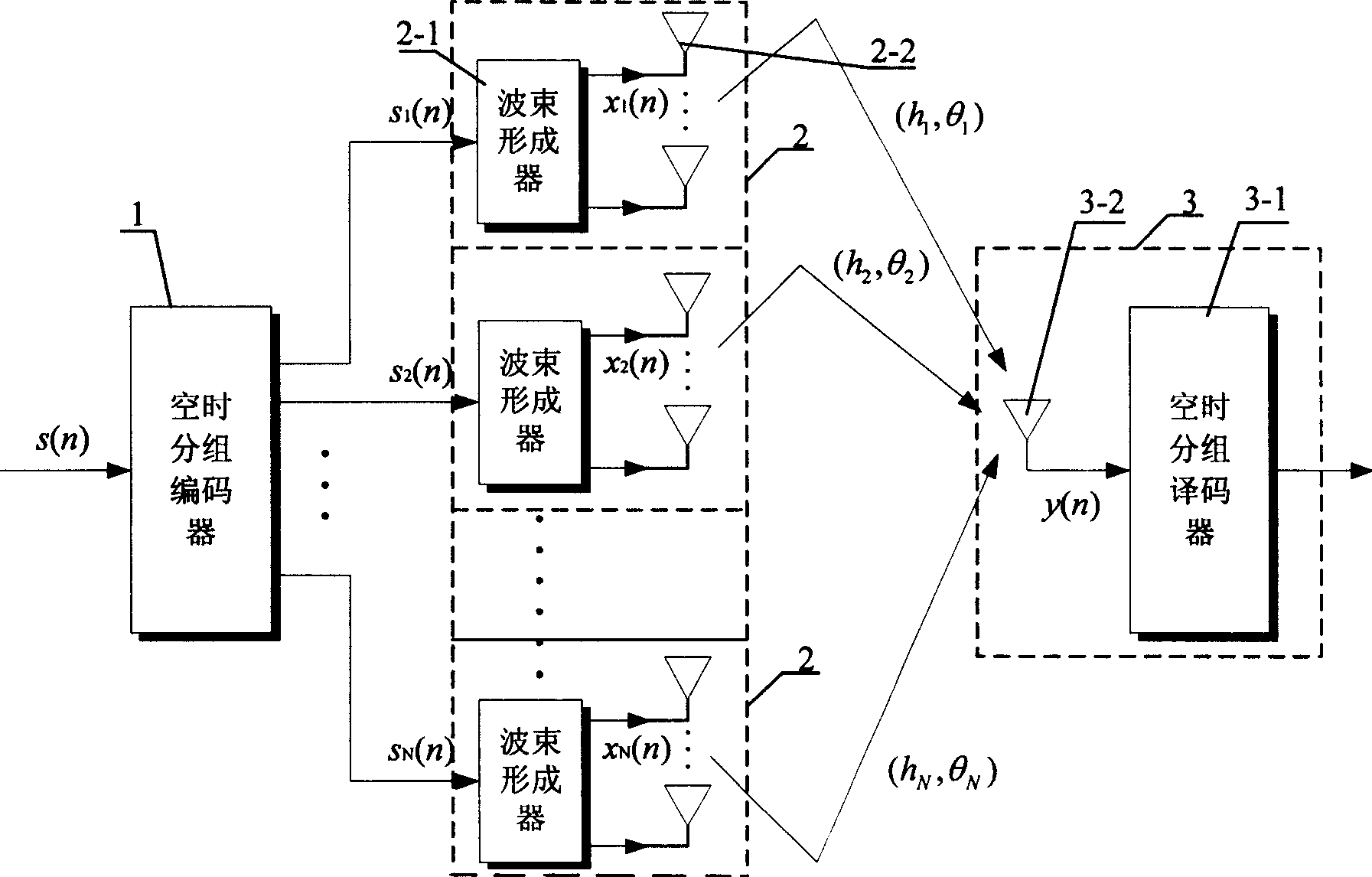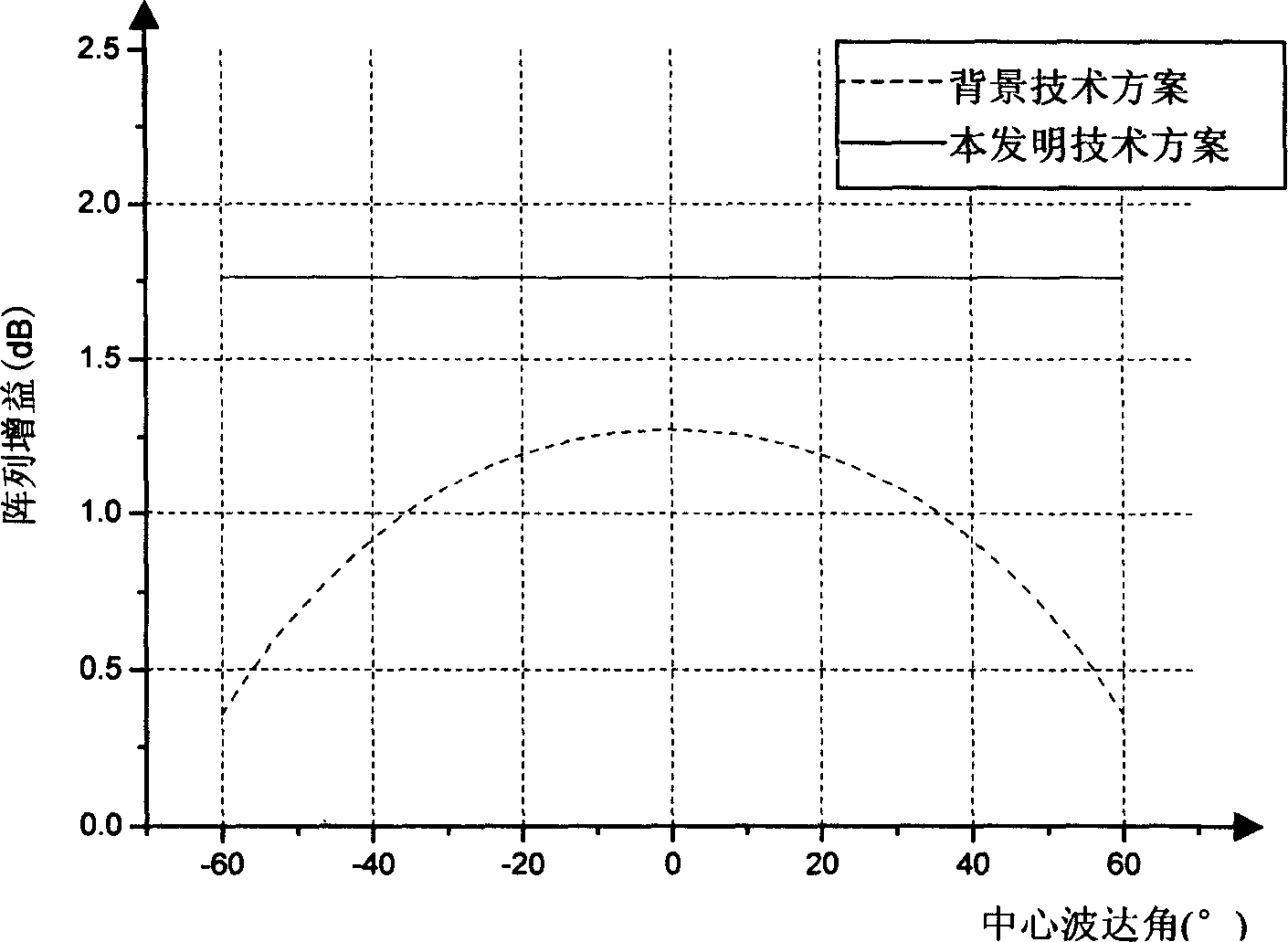Intelligent antenna downstream wave-packet formation method combined with space hour block coding
A space-time block coding and smart antenna technology, applied in diversity/multi-antenna systems, space transmit diversity, etc., can solve problems such as bit error rate fluctuations and unstable system performance
- Summary
- Abstract
- Description
- Claims
- Application Information
AI Technical Summary
Problems solved by technology
Method used
Image
Examples
specific Embodiment approach 1
[0028] Specific implementation mode one: the following combination Figure 2 to Figure 8 This embodiment will be specifically described. The equipment used in this embodiment is composed of a space-time block coder 1, N beamforming units 2 and a mobile station 3, and each beamforming unit 2 is composed of a beamformer 2-1 and M base station antennas 2-2 , the mobile station 3 is composed of a space-time block decoder 3-1 and at least one mobile station antenna 3-2, and the distance between two adjacent base station antennas 2-2 arranged in the same beamforming unit 2 is less than or equal to The carrier wavelength of the signal transmitted by half of the base station antenna 2-2, the distance between two adjacent beamforming units 2 is greater than or equal to ten times the carrier wavelength of the signal transmitted by the base station antenna 2-2, the method is realized through the following steps: 1. Input The signal s(n) first passes through the space-time block encoder ...
specific Embodiment approach 2
[0040] Specific implementation mode two: the following combination figure 2 This embodiment will be specifically described. The difference between this embodiment and the first embodiment is that: in step one, the space-time block encoder 1 selects the Alamouti STBC scheme for encoding. Among many space-time coding schemes, the coding efficiency of the Alamouti STBC (Alamouti is the name of a foreign scholar, Alamouti STBC can be translated as Alamouti space-time block coding) scheme is 1, compared with the uncoded system, it can maintain the same Under the premise of increasing the bandwidth of the system, it can improve the spectrum utilization rate of the system. It has been widely used because of its simple coding and decoding, effectiveness and unit coding efficiency. Introducing the beamforming technology into the Alamouti STBC system can make up for the deficiency of this low-order space-time block coding, obtain beamforming gain and diversity gain at the same time, a...
PUM
 Login to View More
Login to View More Abstract
Description
Claims
Application Information
 Login to View More
Login to View More - R&D
- Intellectual Property
- Life Sciences
- Materials
- Tech Scout
- Unparalleled Data Quality
- Higher Quality Content
- 60% Fewer Hallucinations
Browse by: Latest US Patents, China's latest patents, Technical Efficacy Thesaurus, Application Domain, Technology Topic, Popular Technical Reports.
© 2025 PatSnap. All rights reserved.Legal|Privacy policy|Modern Slavery Act Transparency Statement|Sitemap|About US| Contact US: help@patsnap.com



